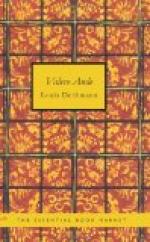The advice already given in regard to the differences in packs, depending on their various purposes of cooling, diverting, calming or dissolving, must also determine in this case as to the extra amount of covering. The access of cold air at the neck and legs, however, must always be carefully guarded against.
An ablution or bath must follow each whole pack.
If properly applied, the “whole pack” will be of the greatest benefit in all febrile and chronic cases.
Inflammations require partial packs, while at the same time dissolving or diverting packs of longer duration are applied to the parts of the body which are not affected.
SMALL COMPRESSES
Small compresses may be applied to any part of the body.
They reduce ulcers and slight inflammations; they dissolve coagulation in cases of rheumatism or gout, even of long standing.
A medium sized piece of linen folded six to eight times, is useful in case of toothache or earache. The compress must be covered with a woollen cloth and fastened as securely as possible. Dissolving compresses must be covered more thickly than cooling ones.
Special compresses are sometimes needed on the head, on the heart and around the neck to prevent congestions. They are covered only slightly, and like all cooling compresses, are changed as soon as they become hot.
GYMNASTICS, MASSAGE AND BREATHING EXERCISES (28, 29, 30)
The three items under “Physical Treatment”: 28. Gymnastics, 29. Massage and 30. Breathing, require only a few explanatory remarks.
Their common object is, by means of external mechanical aid, to stimulate the circulation of the blood which is undergoing the process of regeneration. They remove obstacles to circulation and produce movements and reactions. While, in the case of massage, this external aid must, as a rule, be given by a third person in order to be effective, gymnastics and breathing exercises depend upon the patient himself. All of them, however, have the common attribute that, in order to be useful, they must be strictly individual. The old proverb: “No one thing is good for everybody,” is fittingly applied in this case.
There are few things that are so much abused as this rule in regard to gymnastics. I cannot urge too strongly the importance of caution in advising such exercises. While much of what is claimed for them may be good and true, the governing question as to what is suitable in an individual case, can obviously not be determined by any such impersonal advice. It is the exclusive right and the duty of the attending physician to prescribe whether, and to what extent, these exercises should be applied in each case.
This is true of gymnastics even when practised by reputedly healthy people. By executing certain movements, they may develop disease and weaken certain organs, through ignorance of their abnormal condition.




